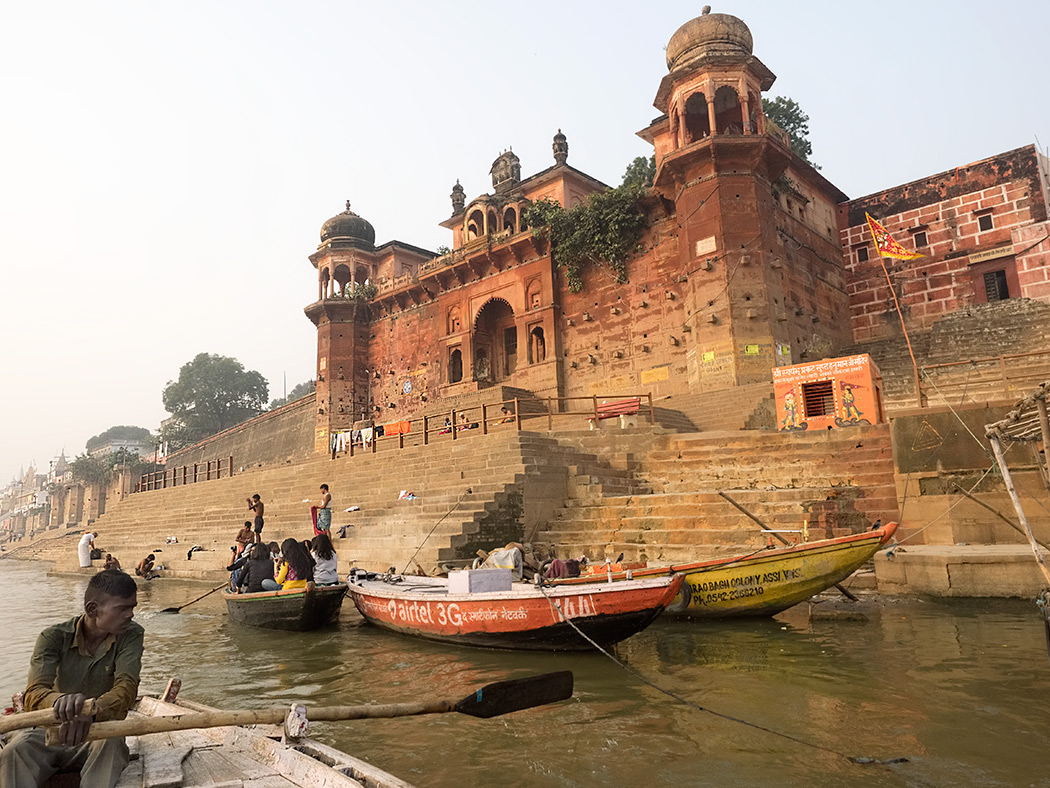Along the Ganges River in Varanasi, India, more than 90 stairways (ghats) lead down to the river. Walking the entire length of the ghats is highly recommended, but the extraordinary architecture along the river bank is best appreciated from a boat. Chet Singh Ghat is a perfect example. On foot, I looked up at Chet Singh Fort, towering high above me at the top of the stairs. It’s rich red sandstone facade glowed in the late afternoon sun. But I didn’t appreciate its immensity, or notice the filigreed Mughal domes that crowned its rectangular base, until I climbed into a boat a few days later. From the water, Chet Singh Fort was magnificent. I had to know more.
The fortress is named for Rafa’at wa Awal-i-Martabat Raja Sri Chait Singh Sahib Bahadur, a Maharaja of the Narayan Dynasty that had ruled Benares (Varanasi) since the year 1000. Chait Singh ascended to the throne as Raja of Benares in 1770 and was soon constructing his palace on the ghats. In a decision that would later save his life, he fashioned it in the form of a fortress. At the time, Benares was not yet part of the British East India Company, but the English had long lusted for control of the area. Like his father before him, Chait Singh continued to resist the British, but in 1780 the first Governor General of British India, Warren Hastings, decided to take over the city. Hastings demanded that Chait Singh provide the British with millions of Rupees and 2,000 mounted troops. When he refused, Hastings sent troops to arrest the Maharaja. Protected by the strong fortifications, palace guards fought off the British sepoys while Chait Singh escaped by climbing down a rope made of turbans.


Raja chait singh fought a war with british , never escaped by rope, this was a rumor spread by British to defame the brave raja. A classic case of how history was distorted by British.